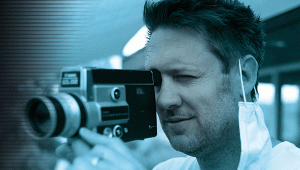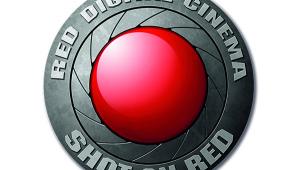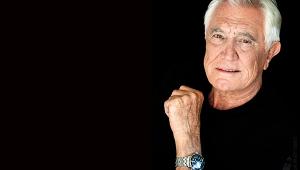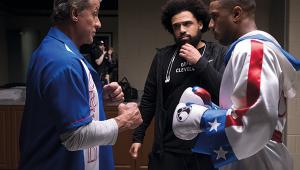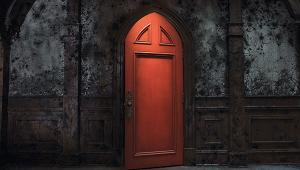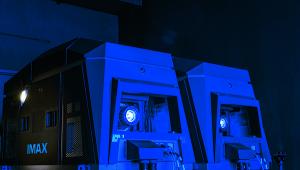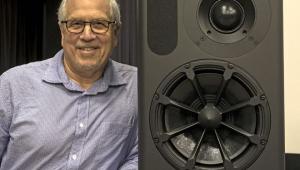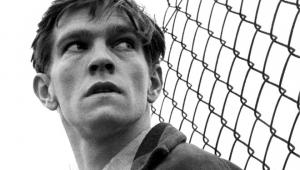Exclusive Interview: The sound of Star Wars

Can you tell us about your involvement with the Star Wars Blu-ray release?
‘I was the supervising sound editor on the theatrical release of Episodes I, II and III, which I worked on with [legendary sound designer] Ben Burtt. I’ve also been involved in the restoration of Episodes IV, V and VI ever since about 1997 when they did the Special Editions of the films. Now we have the Blu-ray release, which will be the first time that the masters of our audio have ever been heard in a lossless format. And we’re very excited to have our masters heard the way we always intended, with no compression artefacts whatsoever.’
As I understand it there were three mixes originally created for Star Wars in 1977 – mono, Dolby Stereo and six-track 70mm…
‘Correct.’
So I was wondering which, if any, did you go back to for the basis of the Blu-ray release? Was it one particular version? Or was it a case of cherry-picking the best elements from each?
‘The majority of people probably heard the film in mono back in the ‘70s and, I was only about five when it came out, but I’m sure that was the version I heard… Not that I can remember that far back.
But I know that when we made the Special Edition in 1997 we tried to cherry-pick from the different masters. And the problem we had then was that that was all we had – the masters. We just had the mono, the stereo and I think it was like an L/C/R/S, a four-track master, for the 70mm. We didn’t have discrete stems for anything. So all we could do was lay stuff on top of what was already created. Because of this, we’d have to make gross EQ adjustments to the entire mix whenever we wanted to do anything and that was a big limitation. Because of this I always thought that the ’97 mix was a little brittle and a bit harsh. It didn’t really have the full extension to the format for the re-release we did back then.
‘I had the Betamax as a kid and the LaserDisc that came out in ’91, so I’m very familiar with all of the previous mixes. And I just wanted to make sure that everything performance-wise was included in the updated version. We’ve been working on A New Hope since 2003/04 for the DVD release and then, once again, we started working on the Blu-ray version in about 2007. So it’s been a long process of getting that together and having the mix balanced correctly and working alongside George Lucas and Ben Burtt to make that happen.’
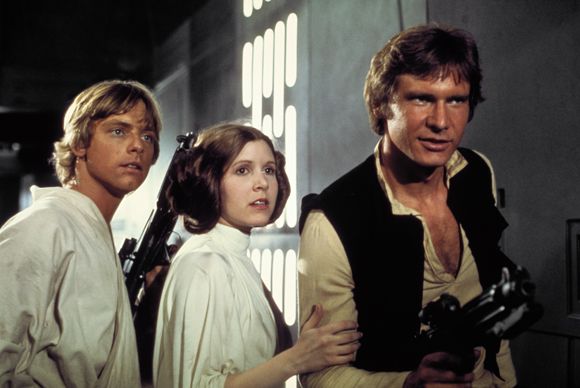
How important is the audio to the success of a movie like Star Wars?
‘I think it’s a big part of it. They even created, back when the original Star Wars was made, a special Oscar, an Academy Award for Ben Burtt because of the work he did on that film. It was like a special sound effects award that was made just for him. And the company I work for, the Skywalker Sound division of Lucasfilm, was created to make the Star Wars movies, although we’ve had success beyond that, working with other directors. So for those of us working at Skywalker Sound, the Star Wars movies are like our crown jewels. We really want to make sure that they are released with the utmost care on Blu-ray. We’ve taken a lot of care with these masters.’
Speaking of Blu-ray, as somebody involved in the filmmaking process, what are your thoughts about the format?
‘I love it. I think it’s great. I mean, it’s a format that’s got really high quality visuals, interactive features that are great, and the fact that the sound can be uncompressed is fantastic for us.’
The Blu-ray release of the saga features new 6.1 mixes for the films. How do you balance being sympathetic to the original soundtracks when doing new surround remixes?
‘It’s hard. That’s one of the main challenges. The big thing George [Lucas] told us was that he wanted all the films to kind of sound cohesive. So that anybody who puts them in, even someone who hasn’t even seen them before, can watch them and feel it’s similar across all six films. Or at least in groups of three – the original trilogy and the prequel trilogy.
‘A New Hope definitely took the most TLC to make that happen, because when it was made, at the time they really didn’t know it was going to be under the microscope that all the other films subsequent to that would be under. And the masters, the original mixes, were done in Los Angeles and were done during a night shift – it was a totally different time as to how you made mixes back then. They were almost a performance. You’d have to go from the start of the reel all the way to the end and remember all of your EQ and fader moves and everything you’re doing all as a performance. Today, obviously, you can do it all non-linearly. Your automation is saved on a computer, so you can really craft scenes right down to the last second.
‘Anyway, we just really wanted to make sure that the balance was the same, that the dialogue can be heard, that John Williams’ music is going to be heard the way people remember it. But you also want to be able to extended frequencies into the subwoofer. Take the opening scene, where you’ve got the Star Destroyer fighting the Blockade Runner. People want to feel that come from overhead and you want to feel the subwoofer extend. But none of that is there in the original mono mix. You really have to build all of that. It’s like giving people what they think they remember hearing in 1977, but doing it in 2011 with a Blu-ray. And also making it sound comparable to the other five movies. We went through those reels hundreds of times in order to get approval from both Ben and George on that.’
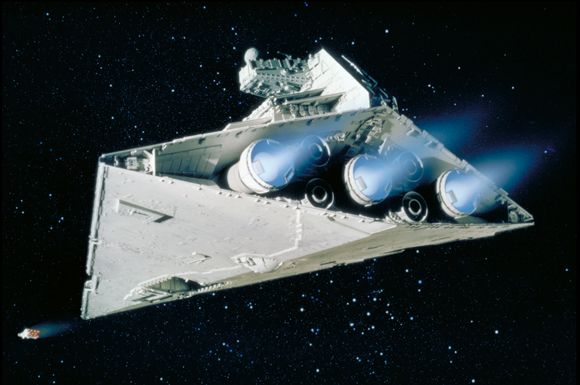
And how hands-on has George been with the approval process for the Blu-rays?
‘Well, my main task before I even had George become involved was that I just wanted to make sure that it played right. I’m talking A New Hope now, because that’s the one that had the most work done on it. I had all the material that was used in the original mix. So I had to pretty much rebuild that movie from scratch, getting all of the original production takes, getting all of the sound effects out of Ben Burtt’s library and all of the music takes from the John Williams library, and re-cut that to the picture and make sure that it’s all correct. And that was a huge task. It took a really long time going over the film in 15 second chunks, just listening to it.
‘So once I got that all in place I had George come in and listen to the reel and we mixed it again against what we had. We used the Special Edition as the starting point, because that was the last time George had listened to it and approved the mix. So we kind of built it up from there. And occasionally I would go back and listen to the VHS and the mono mix just to see how far out we were or not. So, he was definitely hands-on for the playbacks we did for him’.
Finally, if you could only pick one sequence from the six films, which would you choose as the definitive Star Wars Blu-ray audio demo?
‘Good question. I’ll pick one from IV, V and VI and one from I, II and III, if that’s okay.
‘The one from the prequel trilogy, my favourite, is definitely the Pod Race in The Phantom Menace. I think it showcases great sound effects work and sound design. And it really has aggressive subwoofer and surround usage with all the different motors we created for those scenes. And then there’s John Williams’ music, which comes in just at the right moment.
‘My favourite moment from IV, V and VI is anything with the Carbon Freezing Chamber in The Empire Strikes Back. Anything they do with the Carbon Freezing Chamber, when they’ve got Han in there or the lightsaber fight with Luke and Vader. The ambience in the background, Darth Vader’s breathing and just the way the lightsaber fight goes and the intensity of that scene. I think the audio really matches the visuals really well and builds a great environment to listen to.’
Star Wars: The Complete Saga is out on Blu-ray now from Twentieth Century Fox Home Entertainment. This interview first appeared in the November 2011 issue of Home Cinema Choice.
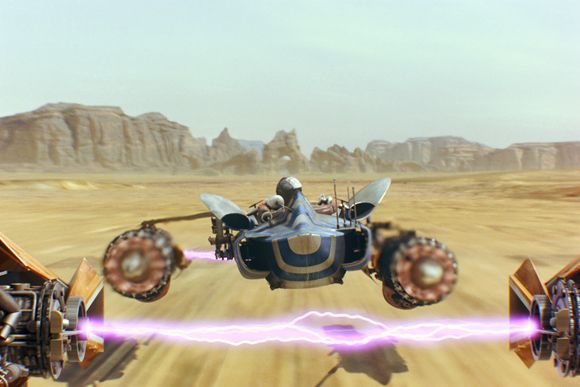
 |
Home Cinema Choice #351 is on sale now, featuring: Samsung S95D flagship OLED TV; Ascendo loudspeakers; Pioneer VSA-LX805 AV receiver; UST projector roundup; 2024’s summer movies; Conan 4K; and more
|


